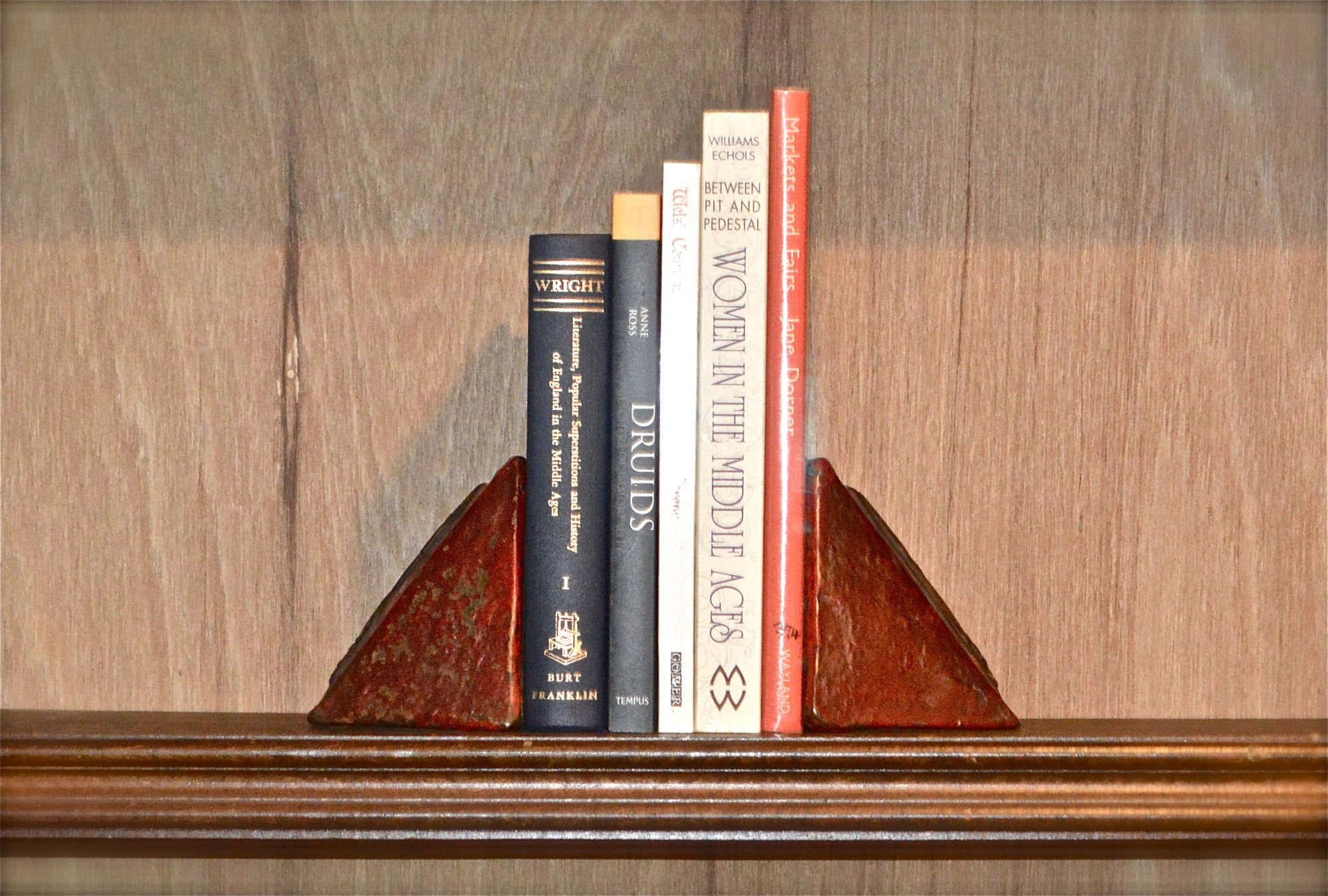

Several years ago antique shops in the Los Angeles area were flooded with reproductions of this pair, all beautiful, so the collector needs to be wary regarding these pairs when in mint condition. For more information about Von Nessen click here to visit COOPER HEWITT, Smithsonian Design Museum. They were designed by Walter Von Nessen, a leader in the late 1920’s and the 1930’s in American commercial design. These bookends represent the trend perfectly – pure geometry. Decorative items produced in the United States in the nineteen thirties grew very geometric. The Chase Brass and Copper Company in the early 1930s morphed Art Deco style into a more machine like style. In three combinations – satin brass and copper, English bronze and English copper, black nickel and satin nickel. 17019): A striking ring design by Von Nessen. Photo from “THE CHASE ERA: 19 Catalogs of the Chase Brass & Copper Co. The chased sheet copper, the pins, the quarter -sawn oak, and the choice of an owl image, all indicate early handwork in the Arts and Crafts style. A strip of sheet copper is pinned around the curved margin of each bookend with the chased letter R, presumably the monogram of the artist.The bookend is quarter-sawn oak, a decorative wood of that era with a metal foot nailed to the base for support. There is an image of an owl which has been chased into the copper. A shaped piece of sheet copper is fastened to the face of each bookend by ball-head pins around the margin. This style reached America at the dawn of the last century and these bookends show it to us. In protest, the new style advocated graceful, functional objects, hand-made by the artist.

The industrial revolution was sweeping England at that time, and household objects designed for mass production rather than artistic merit were being produced. Natural light shows the dull patina of age on the copper The Arts and Crafts art style grew up in the last half of the nineteenth century, in England, largely through the efforts of the brilliant artist, William Morris.


 0 kommentar(er)
0 kommentar(er)
